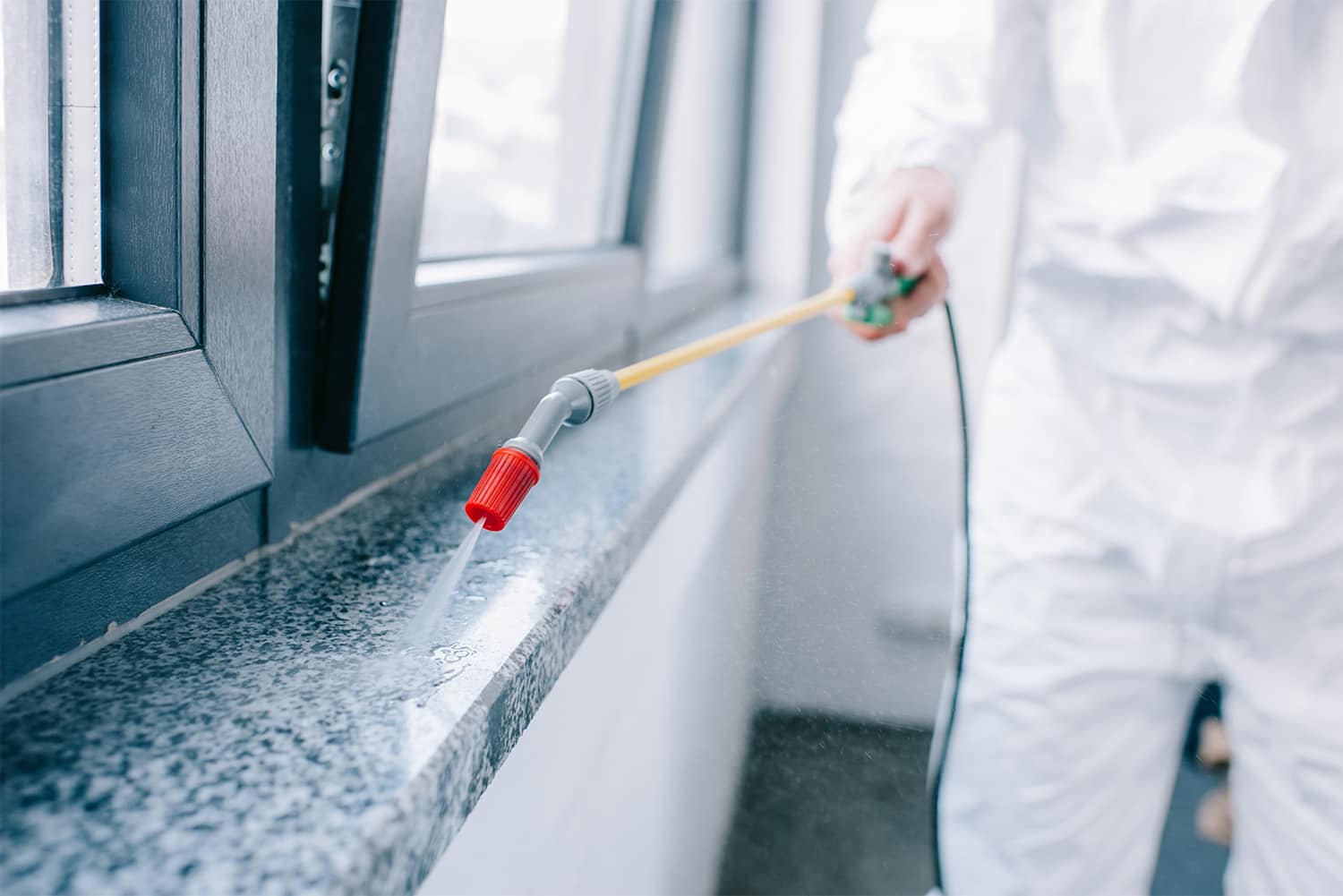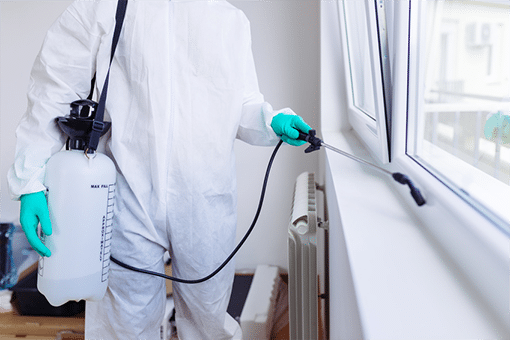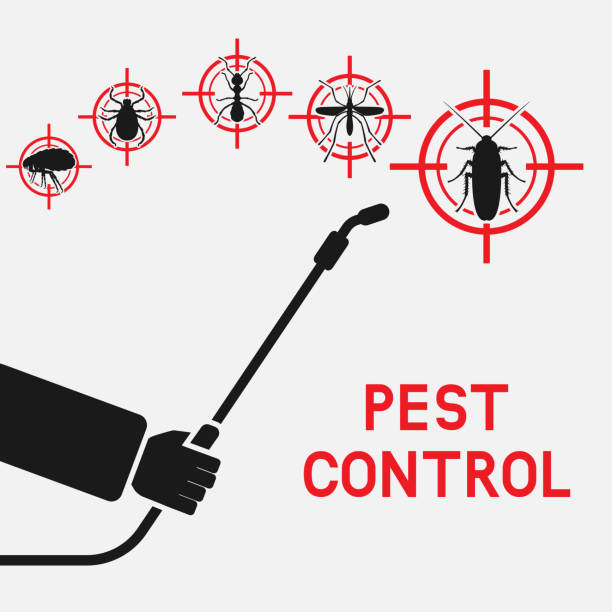Sorts Of Pest Control: Which Technique Is Right for Your Infestation?
When faced with a parasite invasion, the option of a proper approach for insect control is essential in properly handling the scenario. By checking out the numerous types of bug control methods offered, individuals can make enlightened decisions customized to their one-of-a-kind circumstances, making sure a much more efficient and sustainable result in bug eradication.

Chemical Bug Control
Chemical bug control includes the usage of artificial or naturally acquired chemicals to take care of and eliminate pest populations efficiently. This technique is commonly utilized in farming, forestry, and household setups to battle a variety of parasites, consisting of insects, weeds, and rats. Using chemical pesticides can provide fast and targeted remedies to pest invasions, making it a prominent choice for many people and organizations.
Among the key benefits of chemical insect control is its ability to promptly get rid of insects, minimizing the danger of damage to plants, building, and human wellness - pest control visalia. By utilizing particular chemicals that target particular pests, this method can properly regulate invasions while decreasing harm to advantageous organisms and the setting when used correctly
However, the usage of chemical insect control additionally increases concerns regarding potential negative effects on non-target types, water sources, and human health and wellness. It is essential to adhere to safety standards, apply chemicals sensibly, and consider different insect control approaches to reduce these threats and make sure lasting insect management practices.
Organic Insect Control
Organic bug control, additionally called biocontrol, makes use of living microorganisms to take care of and minimize bug populaces naturally. This technique utilizes the power of nature to regulate insects without the demand for artificial chemicals. Biocontrol can involve the introduction of all-natural enemies of the parasite types, such as parasites, predators, or pathogens, to reduce insect populaces. By utilizing the pest's natural predators or virus, organic bug control provides a eco-friendly and sustainable solution to pest management.
One typical example of organic bug control is using ladybugs to control aphid populations in yards. Ladybugs are all-natural predators of aphids and can help maintain their numbers in check without making use of harmful chemicals. The bacterium Bacillus thuringiensis (Bt) is made use of as a biological insecticide to regulate caterpillar insects while being safe for various other organisms.
Mechanical Parasite Control
Making use of physical and hands-on approaches to handle bug populaces, mechanical pest control offers an alternate technique that does not rely upon using living microorganisms or synthetic chemicals. This method entails the use of obstacles, traps, or various other devices to literally hinder or get rid of pests. By obstructing pest entrance points or establishing up traps to catch them, mechanical parasite control can successfully reduce invasions without presenting chemicals into the atmosphere.
One usual example of mechanical parasite control is the usage of mesh displays on home windows and doors to stop bugs from entering buildings. pest control visalia. This straightforward yet efficient approach functions as a physical obstacle, keeping bugs out while permitting proper ventilation. In addition, devices like mousetraps, fly swatters, and ultrasonic repellents drop under the mechanical pest control this website classification

Physical Parasite Control
An efficient method to handling parasite populaces without relying on chemical or biological approaches entails using physical insect control methods. Physical parasite control methods aim to get rid of or prevent pests with mechanical methods as opposed to chemicals or pesticides. These methods are commonly chosen for their eco pleasant nature and very little effect on non-target microorganisms.
Some common physical insect control techniques consist of using obstacles such as nets or displays to avoid pest entrance, traps to catch and remove parasites, and hand-picking to physically get rid of insects from plants or frameworks. In addition, techniques like warmth therapies can be made use of to manage parasites like bed pests by increasing the temperature level to degrees that are lethal to the bugs.
Physical pest control is especially beneficial in integrated insect monitoring (IPM) approaches, where multiple bug control approaches are incorporated for efficient pest monitoring while lessening using chemicals. By utilizing physical insect control techniques, people can successfully resolve insect invasions with marginal environmental effect.
Integrated Parasite Administration
When carrying out physical insect control approaches as part of pest administration approaches, Integrated Pest Administration (IPM) becomes a detailed approach that leverages different strategies to properly control pest populations. IPM focuses on long-lasting prevention of parasites with a combination of organic, social, physical, and chemical tools customized to certain parasite issues. By incorporating multiple control techniques, IPM intends to lessen the threats connected with insects while likewise minimizing dependence on chemical options.

Conclusion
To conclude, establishing the most effective approach of parasite control for your problem depends on different aspects such as the type of bug, the level of the problem, and ecological considerations. Chemical bug control includes using pesticides, organic parasite control uses natural predators, mechanical insect control involves physical obstacles, physical insect control consists of capturing or getting rid of insects, and incorporated pest administration combines several methods for an all natural strategy to pest control. Choose the technique that ideal fits your particular circumstance.
By using the bug's natural killers or virus, organic parasite control offers a ecologically friendly and sustainable service to pest check this administration.
Making use of manual and physical methods to manage parasite populations, mechanical pest control offers an alternate technique that does not count on the usage of living microorganisms or artificial chemicals.A reliable approach to taking care of insect populations without counting on chemical or biological techniques entails the usage of physical pest control strategies.When executing physical bug control approaches as part of insect administration strategies, Integrated Insect Monitoring (IPM) arises as a comprehensive approach that why not try these out leverages different strategies to effectively control pest populaces. Chemical insect control includes the usage of pesticides, organic pest control makes use of natural killers, mechanical pest control involves physical barriers, physical bug control includes capturing or getting rid of bugs, and integrated pest monitoring integrates multiple approaches for a holistic approach to pest control.